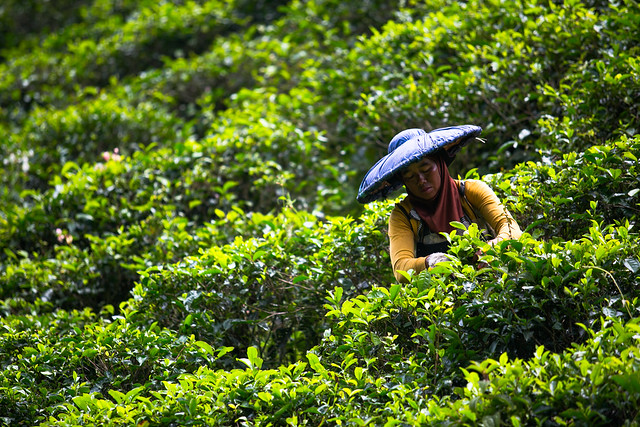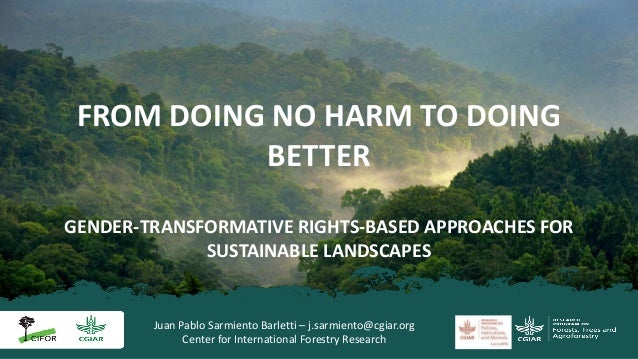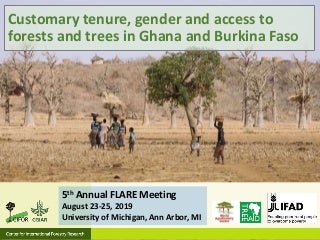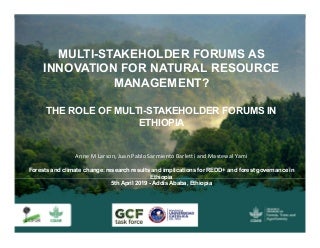- Home
- Research
- Cross-cutting themes
- Gender and youth
Gender and youth
Latest news
Explore our resourcesOverview
Gender Research across FTA
With an estimated 1.6 billion people dependent on forests and trees, including trees on farms, for their livelihoods, forest, tree and agroforestry systems have the potential to address many sustainable development challenges. Gender relations and norms, as fundamental organizing structures across cultures and societies, play a pivotal role in shaping opportunities and constraints in these tree-based systems, and condition the ability of women and men to benefit from, and contribute to, positive development and environmental change. Hence, providing relevant solutions and leveraging opportunities requires understanding the complex role of gender in shaping livelihood and resource management decisions, governance, and the distribution of benefits from tree-based systems.
The forestry and agroforestry sector has much to contribute to addressing inequalities between women and men, and empowering disadvantaged women and men in ways that contribute to sustainable rural landscapes. The CGIAR Research Program on Forests, Trees and Agroforestry (FTA) is tackling this challenge head on. FTA embeds gender research within each of its five flagships, pertaining to tree genetic resources, livelihoods, inclusive business models, landscapes and climate change. FTA aligns its activities with the Sustainable Development Goals, and contributes to a global vision of gender equality and women’s empowerment.
FTA prioritizes a transformative approach to gender equality by focusing on structural barriers and drivers of change in tree-based and forested landscapes, and how these affect men’s and women’s capabilities to control assets and resources, value and distribute unremunerated labor, and meaningfully participate in decision-making at the household and community levels. The aim is to better understand the complexity of these barriers and develop options to dismantle them.
FTA gender research focuses on how a wide range of changes in forest and tree-based landscapes – such as the development of markets, climate change, migration, expansion of agriculture, and interventions in the name of conservation and development – affect and are influenced by women and men.
FTA considers how gender intersects with other factors of social differentiation, such as age, socioeconomic status or ethnicity, to shape these processes. FTA generates evidence and proposes options to address the structural and institutional factors that constrain young men’s and women’s participation in forest management, tree and forest product value chains and non-farm entrepreneurial activities. It also focuses on the aspirations, interests, skills and knowledge of young men and women, and their relation to tree-based livelihood activities.
The research contributes to the development of tools, approaches, and measures that can support young men’s and women’s capacities, interests, and opportunities in natural resource management.
This way, findings from FTA’s gender research help to safeguard women’s rights, combat gender injustice and equitably expand opportunities for both men and women in rural landscapes. FTA aligns its activities with the Sustainable Development Goals, and aims to contribute to a global vision of gender equality and women’s empowerment.
FTA generates high quality research on gender and social inclusion to inform policy and practice. To do this, FTA:
| Conducts research on issues specifically related to gender relations and forests, agroforests and trees | |
| • | FTA is conducting comparative research on structural causes of gender inequalities in tree-based landscapes, across a range of priority gender, forestry and natural resource management themes; |
| • | FTA is improving local women’s and men’s awareness, capacities, and gender equality and social inclusion through innovative action research methodologies. The aim is to enhance women’s participation in decision-making and control over FTA resources and related benefits, at the household and community levels. |
| • | FTA is synthesizing findings and developing knowledge hubs for researchers, policymakers and practitioners around priority themes; |
| Integrates gender analysis and research into each of FTA’s research streams and projects | |
| • | FTA research teams work with gender specialists to identify and address gender dimensions within larger initiatives focused on tree-seed systems, land and forest restoration, landscape level land-use change, forest-based value chains, and climate change. |
| Strengthens the capacities of FTA scientists and partners to carry out gender-responsive research and develop gender-responsive policies and processes | |
| • | FTA’s capacity strengthening efforts focus on equipping scientists and partners with the latest thinking on gender in natural resource management, including engaging with intersectionality, gender transformative approaches, and with young women’s and men’s aspirations, constraints, and opportunities in tree-based landscapes. |
Builds and maintains partnerships with relevant stakeholders to feed research findings into national and global policy processes
Monitors and evaluates gender integration in research and action across the FTA portfolio, and its contribution to gender equality and social inclusion outcomes
FTA works in dynamic contexts, where not only forest landscapes, but also the ambitions, interests and livelihood opportunities of younger generations, are rapidly changing. Explicitly considering such intergenerational changes and how they link across age and gender helps recognize the current (and future) challenges and opportunities for young people in FTA program areas. To better understand and address the needs and interests of young women and men, FTA conducts research with younger generations, and on young people’s actual and desired engagement in forest and tree-based landscapes
FTA’s research on youth sits within its gender equality and social inclusion research agenda, and is rooted in an analysis of the social relations and structures that shape rural people’s capacities to lead the lives they wish to in (and often beyond) tree-based landscapes. The research follows two interrelated perspectives. The first focuses on the aspirations, interests, knowledge and skills of young women and men in relation to forest and agroforestry landscapes and livelihoods. The second generates evidence around the structural and institutional factors that constrain young women’s and men’s engagement in tree and forest management, and in entrepreneurial activities and value chains across the forest transition curve.
It examines the factors enabling or constraining the capacity of young men and women to innovate within tree-based landscapes, including their typically limited access to decision-making and productive resources, such as land, finance and information. Within both streams, the research contributes to the development of tools, approaches and measures that can support young men’s and women’s capacities, interests and opportunities in natural resource management, related delivery systems and forest product value chains.

Marlène Elias |
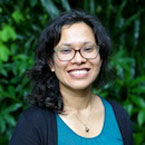
Bimbika Sijapati Basnett |

Markus Ihalainen |

Ana Maria Paez-Valencia |
In its cross-cutting gender research, FTA works with different types of research and boundary partners, from local to global scales, including governmental and nongovernmental agencies in the forestry sector, as well as national gender apparatus, UN agencies, international NGOs, national organizations, gender/feminist academics, community organizations and local communities.
FTA research is responsive to partners’ requests for empirical data to inform gender inclusive policy and to shape global and national priorities. Through national and global partners, FTA also influences global policy forums and processes. Academic partnerships enable FTA to incorporate the latest cutting-edge feminist and gender theories into its research. FTA strives for the coproduction of knowledge with national researchers, students, young professionals and communities, and supports their capacity to address gender issues in their work.
Learning - Key Gender Resources

Introduction
This section provides information, case studies, core and additional resources on key thematic areas of FTA’s gender research — governance, restoration, extension services, climate change and value chains. It provides an overview of significant issues and literature in each of the areas for students, academics, practitioners, policymakers and others who work on natural resource management, gender, and the gender-agro/forest nexus.

Local and community governance
Since the 1980s, there has been a progressive decentralization of forest governance, with forest-dependent communities gaining greater management rights and responsibilities over their resources (Agrawal et al. 2008). Globally, there has been a rise in collaborative governance arrangements, wherein governments and communities are meant to share power, responsibilities and benefits from forest management (Ansell and Gash 2008). Yet two major challenges with these collaborative models have emerged. The first is an inadequate devolution of power from the state to communities, as governments retain significant control over decision-making processes and outcomes (Sarin et al. 2003; Ribot et al. 2006). The second is elite capture of decision-making, resources and benefits, as privileged segments of communities, such as more resourced, senior men, monopolize local forest governance processes (Persha and Andersson 2014).
The capacity of different groups to participate in local forest governance is shaped by factors of social differentiation, such as gender, age and socioeconomic status, which intersect to shape people’s ability to make decisions and access and control resources within their society (Sarin et al. 2003). Gender norms and other social structures that mediate women and men’s roles and relations lead to women’s underrepresentation in forest user groups (Sunderland et al. 2014), and hinder women’s active participation and influence in such groups even when they are formally represented (Agarwal 2010). Such processes can dissuade women and other excluded groups from adhering to collective forest management rules that have been established without their consent, and which may run counter to their needs and purposes. In contrast, women’s active participation in forest governance can promote sustainable management practices and improved forest incomes (Agarwal 2010; Mwangi and Coleman 2013). A substantial body of research looks at gender equity and social inclusion within community forest governance processes worldwide.
Case studies
Why don’t women participate in forest governance and what difference will their participation make?
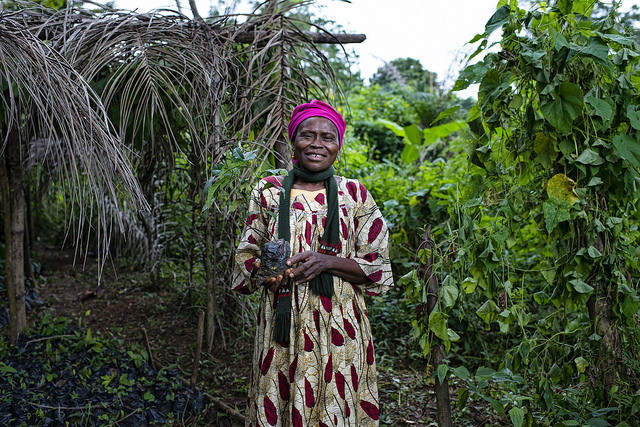
Can local participation in community forestry foster social inclusiveness and gender equity?
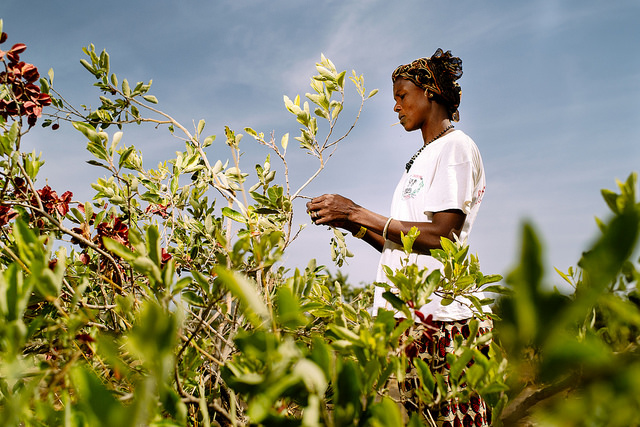
This article from Bioversity International looks at community forestry approaches in India.
Core resources

Restoration
The global pledge to restore almost 125 million hectares of degraded forests and landscapes in response to the Bonn Challenge represents an opportunity to advance the triple goals of environmental conservation, poverty alleviation and gender equality. Many of these restoration effort concentrate on the small land patches managed by the world’s 1.6 billion smallholders — both women and men — who play a critical role in maintaining healthy ecosystems (Marjokorpi and Otsamo 2006). Yet, meaningfully engaging local people in restoration efforts in a way that safeguards their rights and advances their needs and interests remains a pressing challenge. What is more, women and marginalized groups are particularly susceptible to exclusion from decision-making and benefit sharing processes, as even in well-intentioned restoration initiatives, participation tends to be dominated by better resourced, educated, land-owning men from privileged socio cultural groups (Nederlof and Dangbegnon 2007). Initiatives that do not actively seek to protect the rights and promote the voices of marginalized groups may in fact reinforce social cleavages (McDermott 2008) and ultimately undermine the legitimacy and efficacy of restoration efforts.
There are many reasons for actively engaging with local women and men who contribute to, and are affected by, restoration initiatives. First and foremost, restoration initiatives often take place on lands claimed or utilized by communities, which may be considered ‘vacant’ or ‘underutilized’ by external actors and/or which may not be formally titled. If men are susceptible to losing their lands to restoration initiatives, rural women are all the more so, as their rights are especially tenuous due to legal and cultural barriers to women’s land rights and ownership (FAO 2005 and Elmhirst et al. 2017). Women’s (and poor men’s) insecure access to land and trees can also limit their ability and interest to plant or manage trees over which they may not have decision-making authority or long term access (Fortmann et al. 1997; Buyinza and Nabalegwa ). Hence, restoration efforts must begin with a careful understanding of local tenure regimes, seek to ensure the prior informed consent of all affected stakeholders (women and men alike), and offer compensation that local people consider as ‘fair’ and ‘just’ if and when restoration activities result in dispossession of land and livelihoods.
Second, engaging women and men across different social groups in restoration initiatives is important for gaining an understanding of local needs and interests, and to capitalize on the opportunity to learn about local knowledge of ecosystems and resource management institutions (Blay et al. 2007). Due to their socially constructed gender roles, women and men’s environmental knowledge and priorities for restoration often differ (Elias and Carney 2017). Ignoring women in restoration initiatives means overlooking the priorities and knowledge of half of the population. In contrast, publically recognizing women as land managers and ecological knowledge holders can enhance the recognition and social standing they hold within their communities.
Third, many restoration initiatives seek to promote both conservation and local livelihoods. If women are not involved in restoration decision-making processes, their ability to secure new livelihood opportunities through restoration will be curtailed. At the same time, lessons from past experiences suggest that restoration efforts that rely on women’s paid and unpaid contributions without due recognition inadvertently exacerbate women’s work burden and augment gender asymmetries.
Finally, equitable participation in restoration initiatives generates broader local buy-in and enhanced capacities, with improved prospects for both human and socioeconomic development and environmental outcomes (Covelli-Metcalf et al. 2015; Horlings 2015; Lescourret 2015). At the same time, easy win-wins cannot be assumed as restoration efforts that promote gender equality and/or address women’s interests may not always be the most ecologically sustainable option. Hence, harnessing synergies between gender equality and forest restoration requires careful analysis and planning, and empowering local women and men to leverage opportunities and negotiate change at multiple levels (see Mwangi et al. 2016).
Although gender issues are central to restoration, and there exist potential synergies between restoration and gender equality outcomes, gender remains poorly addressed in restoration research and practice (Clewell and Aronson 2013; Broeckhoeven and Cliquet 2015).

Extension services
Extension services, also called rural advisory services, refer to the different activities which provide the information, guidance and services that farmers and other rural actors need to develop their knowledge, skills and practices and improve their livelihoods (GFRAS 2012). Extension services play a critical role in agricultural development for food and nutrition security and for improving productivity and livelihoods (FAO 2014). Yet, the failure of such services to adequately serve women farmers is widely documented (World Bank, FAO & IFAD, 2009; World Bank, 2012; Meinzen-Dick et al. 2011; Manfre et al. 2013). An oft-cited statistic is that women’s low access to productive resources and services such as extension reduces their productivity by 20 to 30 percent compared to men’s productivity (FAO 2011).
The gender gap in relation to extension services has several dimensions. First, although the presence of female extension agents is important for eliciting the participation of women farmers, women only make up 10 to 20 per cent of African extension staff (Manfre et al. 2013). Then, women farmers have much less access than their male counterparts to extension services; the proportion of women who have contact with extension staff is 40 to 90 percent lower than the proportion of men who have this contact (Meinzen-Dick et al. 2011). It is also important to recognize and address the double role that extension providers often have as gatekeepers to agricultural innovations and quality planting material by brokering not only knowledge but also access to subsidized farm inputs.
Thus, the effect of the gender gap in extension services also has implications for the unequal access to key resources. In addition, little attention is given to the role that extension services can play in helping women enhance their decision-making ability, improve their social capital, increase their ownership of assets and gain greater control over the use of income from agriculture, thereby support their empowerment. Christoplos (2010) observes that the gender gap in extension services is symptomatic of gender biases in the wider policy environment and societal norms. Overcoming these biases in relation to extension services requires careful attention to the advisory methods and approaches used, to who can access them and under which circumstances, and to the norms and institutions that stand in the way of equitable service provision.

Structural causes of gender differentiated impacts of climate change
Actual and projected climatic changes will impact differentiated social groups in different ways. For example, climate change is prompting fluxes in forest and tree resources, shifting migration patterns, and changing livelihoods (Djoudi and Brockhaus 2011; Sultana). Gender intersects with other factors of social differentiation such as age, socioeconomic status, and ethnicity to influence local women and men’s exposure and capacity to respond to these changes (Carr and Thompson 2014).
The different cultural, domestic and economic roles that women and men play in their households and communities influence the sets of knowledge they develop about forest and tree resources and the environment (Bee 2016). In turn, this knowledge contributes to their varying adaptive capacities and strategies in the face of a changing natural resource base (Djoudi and Brockhaus 2011). Gender inequalities and norms limiting women’s access to and control of resources, such as land, capital and technical services, can hinder their capacities to navigate the challenges of a changing climate (Brody et al. 2008; Lambrou and Piana 2006; Rodenberg 2009). Furthermore, while both women and men are integral players in natural resource management, men often have greater opportunity than women to participate in decision-making on sustainable development of forest and tree resources.
Importantly, research demonstrates that gender-related vulnerabilities are neither essential to women nor static (IPCC 2014). For instance, Arora-Jonsson (2011) demonstrates how gendered mortality patterns related to natural disasters are often influenced by intersecting social variables such as class and caste and vary greatly between contexts. For instance, in certain instances in India, women’s vulnerability was a function of poverty (homestead in unfavorable location) and gender (women spending more time around the homestead). In other instances, upper-caste women were more vulnerable due to the need to maintain caste-related ideas of female honor even at a time of crisis. Finally, during Hurricane Mitch, men were found to be more vulnerable due to the social and cultural norms which encourage risky behavior (2011). Djoudi and Brockhaus (2011) find that women in northern Mali are adapting not only to the changing climate, but also to the out-migration of men. However, women’s adaptive capacities were differentiated by restrictive social norms related to class and ethnicity.
Various national as well as local governments are seeking to address climate change in their policymaking and planning in the agricultural and environmental sectors. This is demonstrated by countries’ Nationally Determined Contributions (NDCs), REDD+ schemes, and initiatives to develop adaptation plans and mitigation actions. In this context, it becomes increasingly urgent to develop mechanisms that promote women and men’s equal access to decision-making spaces on climate change related planning, strategies and policies to ensure that their preferences and interests are adequately represented and addressed.
Though empirical case studies on gender and climate change may be limited, critical research on the issues is developing, carried out as part of FTA by partners.

Gender and forest- and agroforestry-product value chains
Forest, tree and agroforestry value chains encompass the full range of activities involved in bringing a timber- or non-timber product from a forest or agroforest to the final consumer. Such value chains vary in geographic scope and scale – from harvesting firewood for the local market to the production, processing, transportation and trade of global export goods such as palm oil, timber and shea nuts. Value-adding activities along the value chain include activities such as harvesting, cleaning, transporting, processing, packaging, marketing and distribution, and involve a wide range of actors (Haverhals et. al. 2014).
The importance of gender in forest, tree and agroforestry value chains has received increasing attention over the last decades (Ingram et al 2016). Gender norms, ideologies and power relations on multiple levels tend to shape value chain dynamics. For example, this could be by stipulating what is socially acceptable ‘male’ and ‘female’ work (including reproductive responsibilities); mediating access to and control over productive assets (Quisumbing et al 2015); and defining who has decision-making power (e.g. Sunderland et al 2014; Ingram et al 2016). While dynamics vary across contexts, gender inequalities shape the nature and extent of women and men’s participation in forest, tree and agroforestry value chains and their accrued benefits. Gender differences are influenced by intersecting social factors such as ethnicity, marital status and age (Ingram et al 2016). But as ageneral trend, women – relative to men – tend to be confined in less profitable value chains (Ingram et al 2014), occupy less remunerative nodes in a given value chain (such as harvesting and retailing), and run smaller businesses (Ingram et al 2016). Women also tend to be underrepresented in forest management and producer associations (Mai et al, 2011). As multiple forest, tree and agroforestry resources can often be found on the same parcel of land, gender biases in decision-making bodies may result in rules and restrictions being biased towards traditionally male-coded products, such as timber, at the expense of female-coded products, including various non-timber forest products and firewood (see e.g. Agarwal 2001, Mai et al 2011).
As forest, tree and agroforestry value chains become integrated into national and global economies, various political, economic and environmental shifts influencing the availability and profitability of forest, tree and agroforestry products are shaping the gendered dynamics and distribution of benefits along the chain. These may enhance opportunities for women, such as the growing demand for charcoal in Zambia that has opened up spaces for women to participate in the traditionally male-dominated value chain (Gumbo et al 2013). Women’s increased participation may serve to challenge unequal gender relations by altering perceptions about men and women’s work and enhancing women’s economic empowerment (Barrientos 2001). For this reason, interventions aiming to promote value chains dominated by women producers, such as those based on shea nuts or other non-timber forest products, have become increasingly popular among development agencies (Elias and Arora-Jonsson 2016, Westholm 2017).
Nevertheless, the globalization of FTA value chains introduces gendered inequalities and risks. Ingram et al, (2014) and Turner (2014) note the risk of elite or corporate appropriation of traditionally female products or value chains as their profitability increases. Even in more formalized value chains, such as oil palm and furniture value chains in Indonesia, women are relegated to being ‘shadow workers’ as their unpaid contributions to the production processes are not recognized (Sijapati et al. 2016). Where women’s work is visible, they tend to be confined to low-skilled jobs, have less secure contracts and receive lower wages than their male counterparts (Nansereko 2010, Li 2015, Arwida et al 2017). The casualization of women workers thereby means that in the event of financial shocks, such as the 2008 financial crisis, women workers are often disproportionately affected (Hurst et al 2010).
A wide range of state, non-state and plural institutions at national, regional and global levels have emerged to respond to growing criticism that the expansion of forest, tree and agroforestry products is contributing to the destruction of the environment and infringement of rights of indigenous peoples and local communities. This includes zero deforestation pledges, moratoriums, certification standards, jurisdictional approaches, roundtables and global/regional trade regimes. There has been limited research thus far on whether and how these engage with gender issues, and their implications for the rights and livelihoods of women and men along the forest, tree and agroforestry chains remain unaddressed (Sijapati Basnett et al. 2016, Sexsmith 2017).
Forest, tree and agroforestry research on this topic seeks to understand gendered dynamics of value chains in order to identify opportunities for lifting structural barriers and enhancing opportunities for gender equitable forest, tree and agroforestry value chains.
Resources
E-LEARNING COURSE ON
Gender and inclusion in Forest Landscape Restoration
In this self-paced online course, you will learn the fundamentals of gender and social inclusion in forest landscapes restoration (FLR). The course focuses on gender inequalities, gender-differentiated impacts and opportunities to address inequalities for more equitable and sustainable FLR, to build the abilities and understanding of diverse stakeholders on the gender and FLR nexus.
LEARN MORE)

